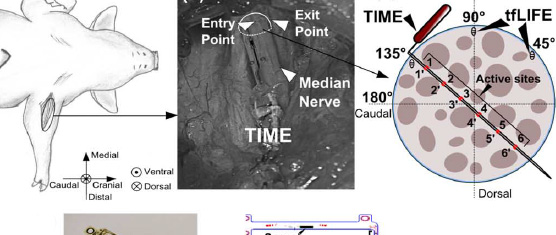A. Kundu, K. R. Harreby, K. Yoshida, T. Boretius, T. Stieglitz and W. Jensen

Abstract
Neural prostheses are limited by the availability of peripheral neural electrodes to record the user’s intention or provide sensory feedback through functional electrical stimulation. Our objective was to compare the ability of the novel “transverse intrafascicular multi-channel electrode” (TIME) and an earlier generation “thin-film longitudinal intrafascicular electrode” (tfLIFE) to selectively stimulate nerve fascicles and activate forelimb muscles in pigs. TIME was designed to access a larger subpopulation of fascicles than tfLIFE and should therefore be able to selectively activate a larger number of muscles. Electrodes were implanted in the median nerve, and sequential electric stimulation was applied to individual contacts. The compound muscle action potentials of seven muscles were recorded to quantify muscle recruitment. As expected, TIME was able to recruit more muscles with higher selectivity than tfLIFE (significant difference when comparing the performance of an entire electrode); a similar activation current was used (no significant difference). Histological analysis revealed that electrodes were located between fascicles, which influenced the selectivity and activation current level. In conclusion, TIME is a viable neural interface for selective activation of multiple fascicles in human-sized nerves that may assist to pave the way for future neuroprosthesis applications.

